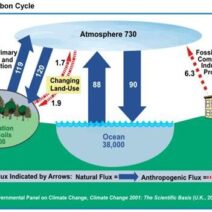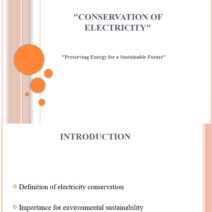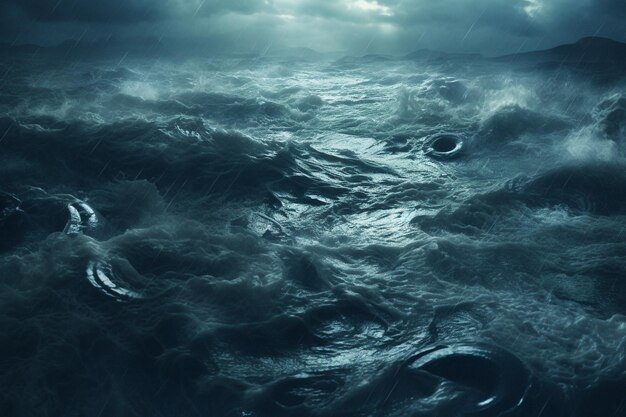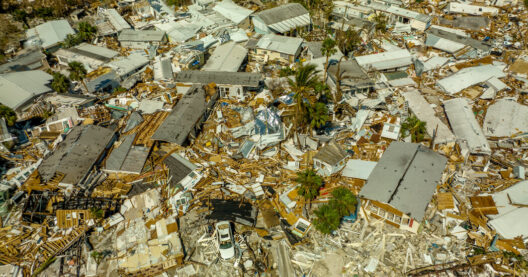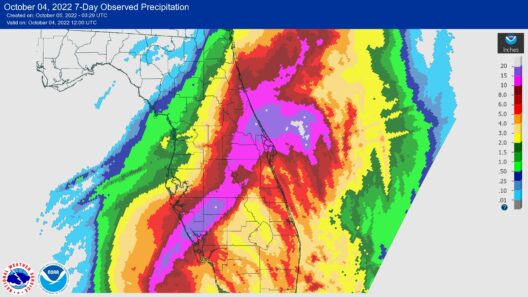In the grand tapestry of Earth’s climate system, hurricanes are but the tempestuous brushstrokes that have long signified nature’s raw power. Yet, as global warming casts its looming shadow, these storms are morphing into ferocious beasts, unleashed by the warming seas that nurture their very existence. The tale of hurricanes is no longer merely about fierce winds and torrential rains; it has evolved into a chronicler of climate change, exposing the intricate connections between human activity and nature’s fury.
The essence of hurricanes lies in their birthright—the ocean. Tropical waters, typically tepid, serve as the incubators where these monstrous storms take shape. When surface temperatures rise beyond the norm, the atmospheric ingredients that thunderstorms require, such as moisture and heat, are amplified. This reaction creates a cauldron of instability, ultimately sparking the formation of cyclonic systems. Herein lies the metaphor: hurricanes are the vengeful embodiments of the oceans themselves, retaliating against the anthropogenic forces of climate change that have inflicted wounds upon their realms.
In recent decades, data has unequivocally illustrated a troubling trend—hurricanes are becoming increasingly intense. The Saffir-Simpson Scale, a system that categorizes storms based on sustained wind speeds, reveals a harrowing uptick in the number of Category 4 and 5 storms. The escalation of these catastrophic events is not mere coincidence; rather, it is a consequence of the thermal blankets that greenhouse gases drape over the atmosphere. With every degree Celsius increase in sea surface temperature, the potential for hurricanes to strengthen intensifies exponentially, much like a pot of boiling water that erupts violently when the heat is cranked up too high.
The concept of “power,” when referring to hurricanes, is particularly poignant. Hurricane power is not a static measurement; it evolves and burgeons, buoyed by warming oceans. The increase in energy available to these storms translates into higher maximum wind speeds, amplified rainfall, and, consequently, a surge in storm surges—torrential waves that leap over coastal barriers with unbridled aggression. As we witness Hurricane Harvey’s catastrophic deluge or Hurricane Katrina’s unprecedented devastation, we come to understand that these aren’t just weather events; they are manifestations of our indiscretions against the natural order, evoking a sense of accountability that we can no longer ignore.
Furthermore, the intimate relationship between climate change and hurricanes extends beyond mere intensity. The increasing frequency of landfalling storms, particularly in regions that were historically shielded from such threats, paints a grim picture of a warmer future. As coastal areas embrace the buoyant lapping of waves, they must now also brace for the onslaught of rising seas and intensifying storms. The shoreline, once a bastion of tranquil retreat, has metamorphosed into a battleground where nature’s fury reclaims its territory. The tales of towns washed away in storm swells speak volumes; the touch of climate change reaches far beyond the scientific realm and into the lives of countless individuals.
One cannot overlook the intricate tapestry of feedback loops that exacerbates the hurricane narrative. As polar ice caps recede and glaciers melt, the fundamental balance of the planet shifts. The influx of freshwater into the ocean alters currents, affecting weather patterns that can either suppress or amplify tropical systems. The emotional response to this knowledge can be disheartening. Still, it is crucial to forge through with an understanding, as ignorance serves only to dull the collective resolve needed to address this existential crisis.
Moreover, the economic implications of hurricane intensification loom large on the horizon. In every vortex of destruction lies a financial reckoning—insurers grapple with unprecedented claims while communities face the daunting task of rebuilding from the ashes. The costs of inaction overshadow the investments needed to fortify our resilience against these natural disasters. The metaphor of a double-edged sword emerges; while we can harness resources to combat climate change, the reality of severe storms can have crippling effects on socioeconomic structures, draining coffers and fracturing communities.
As we ponder these realities, the notion of climate justice must also enter the discourse. Marginalized communities—those least responsible for greenhouse gas emissions—are often the most vulnerable, disproportionately affected by the wrath of hurricanes. It is crucial to address the systemic inequalities that place these populations at heightened risk. By amplifying voices that champion equitable solutions, the path forward can be paved with resilience and fortitude. Each individual has a role in this narrative, whether as advocates for policy changes or as stewards of sustainable practices.
The journey to understanding hurricanes in the age of global warming is fraught with challenges but is equally imbued with potential for change. Education serves as a critical tool; the more informed we become, the more empowered we are to drive collective action. The collaborative efforts of scientists, policymakers, and citizens form a robust frontline against the challenges posed by hurricanes. By championing sustainable choices, investing in renewable energy, and advocating for stringent environmental regulations, we wield the power to alter the trajectory of climate change.
In summation, as we gaze upon the roiling clouds that herald the approach of a hurricane, let us recognize the deeper undercurrents of global warming that fuel these tempestuous forces. The metaphor of the storm invites us to engage in a broader conversation about our relationship with the environment. The war against climate change is not simply a battle of statistics and policy; it is a narrative that encompasses humanity’s very future. May we harness the lessons imparted by these fierce storms, uniting to forge a resilient planet where both humanity and nature can coalesce in harmony.
